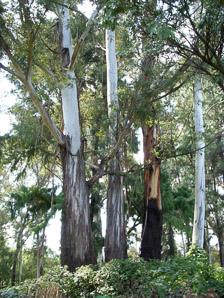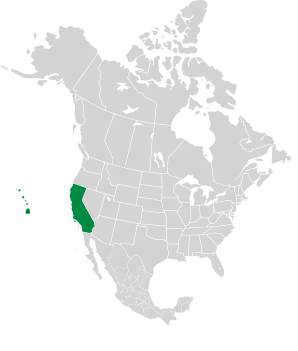|
Eucalyptus globulus Labill.
Tasmanian blue gum, southern blue gum, blue gum, blu
| Kingdom | Plantae | Plants, but not fungi, lichens, or algae |
| Subkingdom | Tracheobionta | Vascular plants—plants with a “circulatory system” for delivering water and nutrients |
| Division | Magnoliophyta | Flowering plants, also known as angiosperms |
| Class | Magnoliopsida | Dicotyledons—plants with two initial seed leaves |
| Subclass | Rosidae | Roses, legumes, proteas, dogwoods, hydrangeas, mistletoes, euphorbias, grapes, many more |
| Order | Myrtales | Includes myrtles, leadwoods, loosestrifes, pomegranates, evening primroses, many others |
| Family | Myrtaceae | Myrtle family, include myrtle, clove, guava, feijoa, allspice, and eucalyptus |
| Genus | Eucalyptus | From the Greek ευ, “well,” and καλυπτος (kalyptos), “covered,” for the covering that encloses the flower |
| Species | globulus | Globular, from the Latin for “small, round ball” |
About plant names...
[An article has not been written yet.]
Eucalyptus globulus description by Thomas H. Kent, last updated 25 May 2020.

© FloraFinder.org. All rights reserved.
|
|

Mature trees have exfoliating bark. · 7/29/2023 · Orlando, Gauteng, South Africa · By Benjamin Winslow  ID is uncertain ID is uncertain 
Range:

About this map...
|




